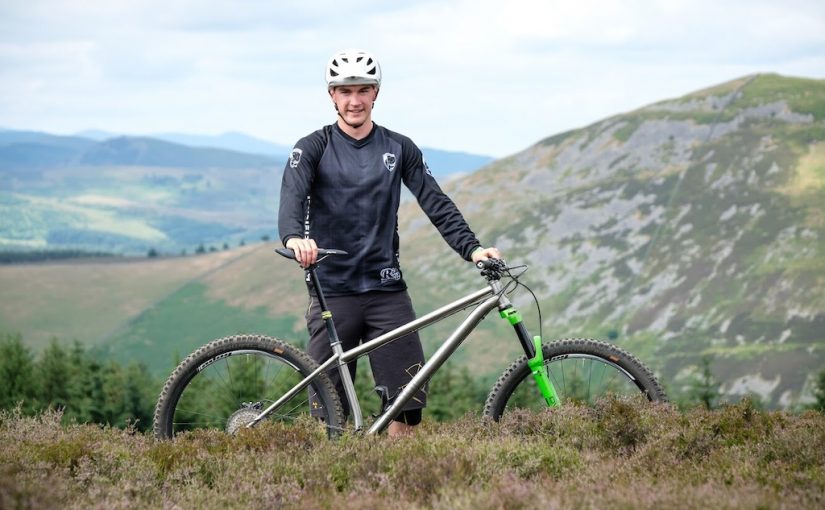A mountain bike handlebar, released for sale this September, is the first to offer a viscoelastic frame designed to absorb more of the impacts that are an inevitable result when enthusiasts and professional riders alike hurtle down trails.
The innovation has been driven by research conducted by Lewis Kirkwood as part of his PhD at Edinburgh Napier University: commercial endorsement for its long term health implications. “Vibration stimulates muscle and it makes the muscle tense, which is why you get arm pump because your muscle doesn’t relax and it cuts off the blood flow,” explains Lewis.
Initial data gathered by Lewis (alongside Dr Lesley Ingram, Dr Eva Malone, Dr Mark Taylor, and Prof Geraint Florida-James) suggested that mountain bikers can actually experience vibration levels that would exceed levels regarded as safe under ISO standards. These are applied in 164 countries, with the goal of ensuring products and services are safe, reliable and of good quality. For example, ISO 5349 – 1:2001 monitors human exposure to hand-transmitted vibration in construction, and caps vibrations at 5.0 ms^-2. But Lewis found mean values of 5.84ms^-2 on the riders he studied over a day of elite enduro racing.
It was important to investigate further, with exposure to vibration in the workplace linked to musculoskeletal, neuromuscular, vascular and other types of pathologies such as hand-arm vibration syndrome.
“We believe there will be ways of optimising the design of components such as handlebars, grips or even gloves, tyres and spokes, and if we could look at ways to minimize vibration while still keeping or improving the performance then that has to be a good thing,” said Lewis, who is a keen mountain biker himself and also a team mechanic with Norco Factory Team.
Since 2016 he has evolved his PhD research at the Innovation Centre run by Edinburgh Napier University and the Mountain Bike Centre of Scotland, at Glentress in the Scottish Borders. Now, kreuz+quer – the company behind bike brand ARC8 and bicycle.engineering – have launched the Rockstock carbon handlebar using input from the research by Lewis. It is the first commercially available handlebar to integrate a viscoelastic damping layer, which means it is designed with the intention of reducing vibration exposure for riders.
For Lewis, the commercial response to his research has been inspirational. “At Napier, we have a big physiology department where, for example, we can take blood from people, so we can link up vibration doses and changes in the blood to see if there is a relationship with things like osteo-arthritis. We can also test many different products at the Innovation Centre. So if a component manufacturer with different layups of seatposts or frame materials wanted to know which was better in the field then we can reliably measure it.
“That’s what I want to do more of.”
